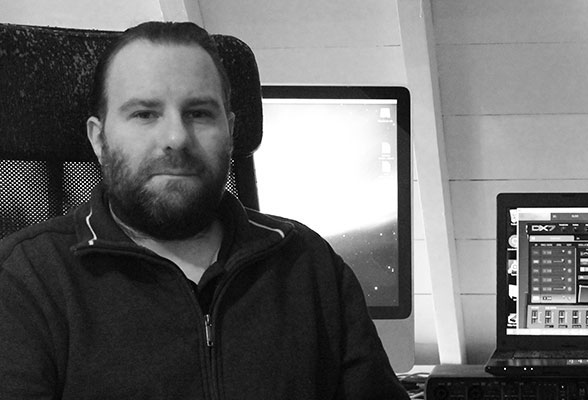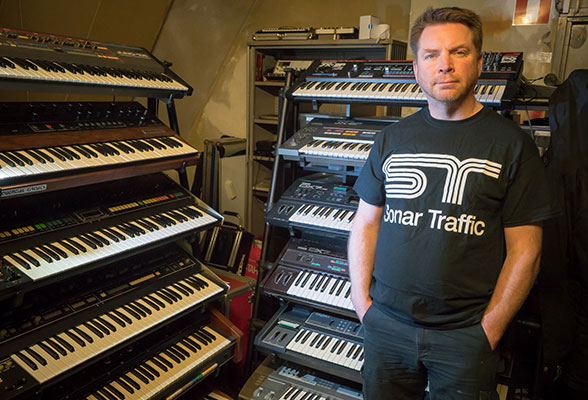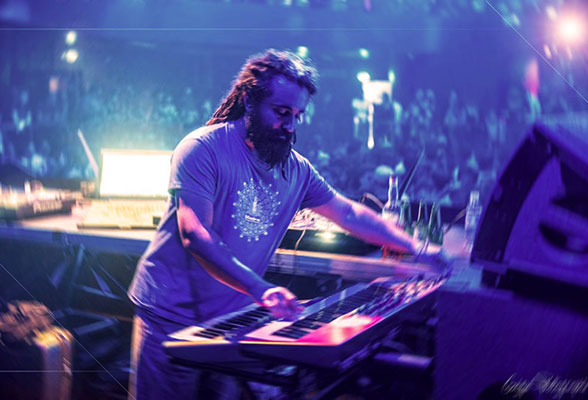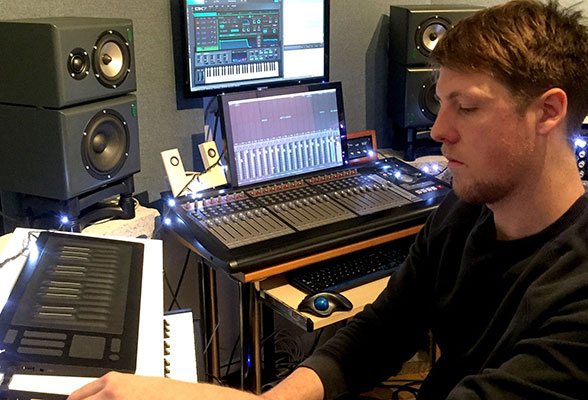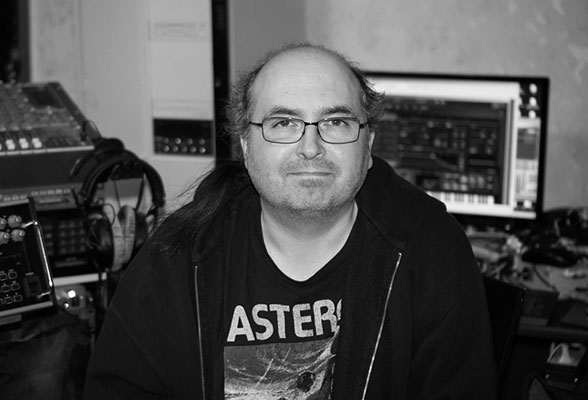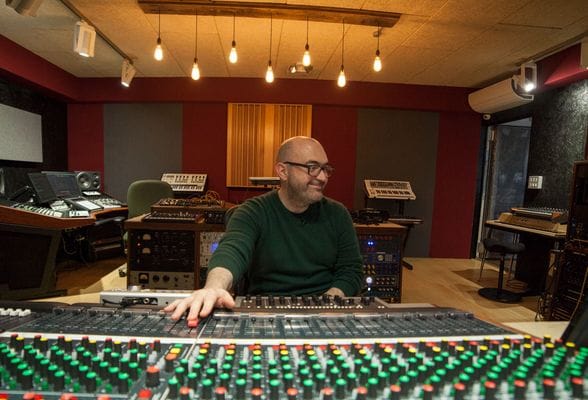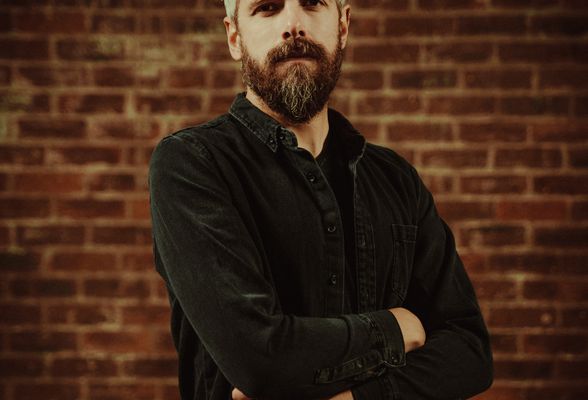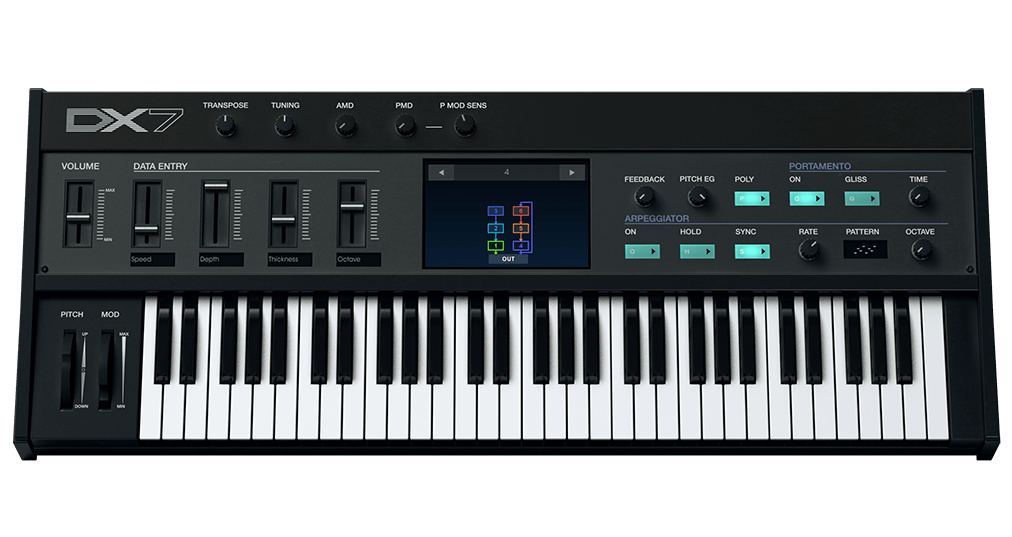
FM the way it was
meant to be heard.
FM synthesis exploded the sonic palette of keyboardists and producers almost overnight.
Going where analog doesn’t, it’s still one of the most versatile approaches to sound-making there is. But musicians found the original DX difficult to program and lacking in real-time control. DX7 V amps up the advantages, loses the limitations, and adds tons of functionality that put it right at home in a modern music making rig.
Back to the...
Need to nail that ’80s chart-topping sound of Sting, Tina Turner, or anything that happened within a mile of David Foster? DX7 V has you covered.
Cutting Edge
Struck, plucked, and bowed sounds were the DX’s specialty, as were percussive keyboards like EPs and Clavs. Hear that FM edge rendered with loving precision.
Digital Personality
From FM classics to lilting pads and sparkling motion-synth soundscapes, listeners will wonder how you got “that” sound.
Well Behaved
Expanded with tons of tempo-syncing and MIDI mapping features, DX7 V’s classic sound fits into the modern workflow without a hitch.
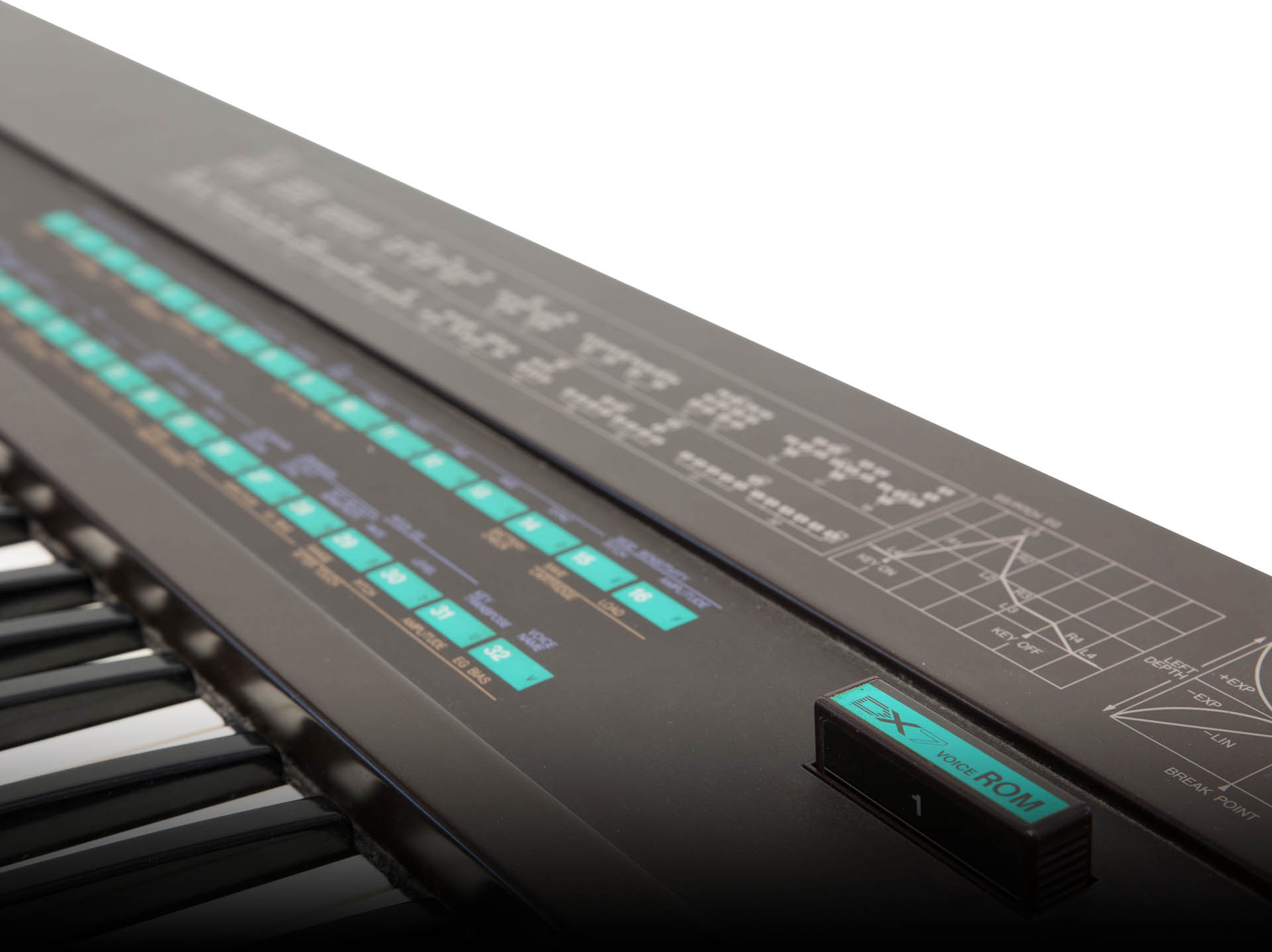
Music for the
Masses
FM easily produced sounds that eluded analog synths.
When the DX made it affordable, everybody wanted one — and pretty much everybody got one.
Once the exploratory genius of a Stanford University professor met the marketing savvy and production capacity of the world’s largest musical instrument maker, keyboards would never be the same again. After its introduction in 1983, it would go on to sell over 200,000 units and define countless sounds from the ‘80s and beyond.
FM is a simple idea at its core: audio-rate modulation of one waveform by another. But it was Dr. John Chowning of Stanford University who made FM viable as a synthesis method all on its own. His work proved that by carefully tuning the modulating waveforms, you could duplicate the harmonic profiles of all sorts of acoustic instruments.
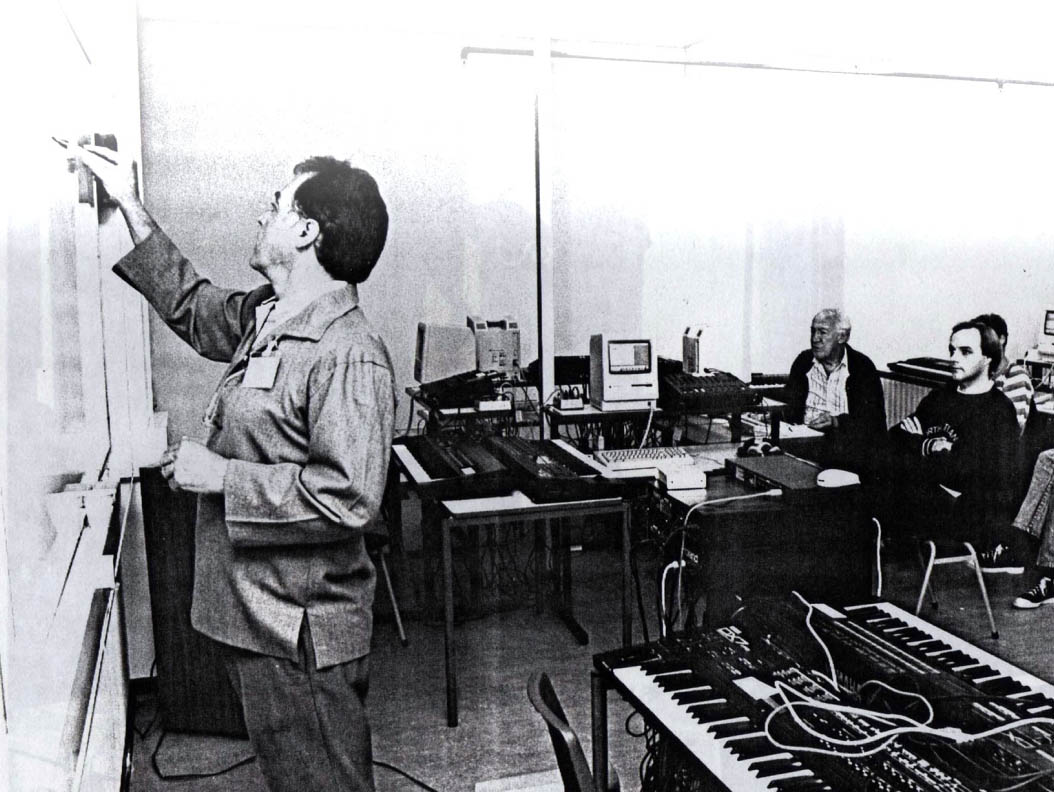
Yamaha® licensed the technology from Stanford in the mid-’70s, leading to 1980’s massive GS1 - with its piano-like cabinetry and green-screen programming terminal - co-developed with Dr. Chowning. New England Digital had also re-licensed FM from Yamaha as the basis of their first Synclavier systems. The word spread through the synth industry: Digital was the future.
Making FM patches editable in an affordable way was a hurdle in reaching the pro synth market. With its membrane keyboard and Data Entry slider, this is what the DX7 achieved in 1983. Importantly, it did so for almost $2000, offering six FM operators, 16 notes of polyphony, a velocity- and aftertouch-sensitive keyboard, 32 preset locations, and expanded sound banks on memory cartridges. That leapfrogged analog synths on specs alone.
Factory presets by Gary Leuenberger and David Bristow showed how realistically the DX7 could produce electric piano, mallets, harmonica, slap bass, and more. These sounds anchored seemingly every song on the pop charts after 1983. Weekend bar band keyboardists could now afford the same instrument as the artists they covered. Once you played a DX, you had to have one.
To hit that sub-$2,000 price, corners were cut. For example, the operators produced only sine waves and shared a single envelope. Some players lamented the lack of knobs and real-time control. DX7 V uncuts all those corners, making a synth of ’80s dreams part of your creative reality.
A different breed
of synthesizer
DX7 V delivers a faithful recreation of the instrument that brought the unique sound of FM digital synthesis to the masses.

Operators
The DX7 V’s six signal generators - called operators - can be used as carriers or modulators. Each operator consists of a simple oscillator with its own frequency and level controls, plus a dedicated envelope-controlled amplifier. Generally speaking, the carrier’s envelope affects amplitude while the modulator’s envelope changes the timbre, with optional keyboard tracking adding the final realistic element of timbre changing with pitch, like an acoustic instrument.
Modulation
The timbre of an FM sound is very dependant on the relationship of the carrier and modulator operators. When the modulator frequency is under keyboard control, its frequency ratio to the carrier determines the basic harmonic profile of your sound, with integer ratios producing more recognizable waveforms and the fractional ones typically resulting in more clangorous, inharmonic ones. Modulator amplitudes also affect timbre, with higher frequencies generally yielding brighter sounds.

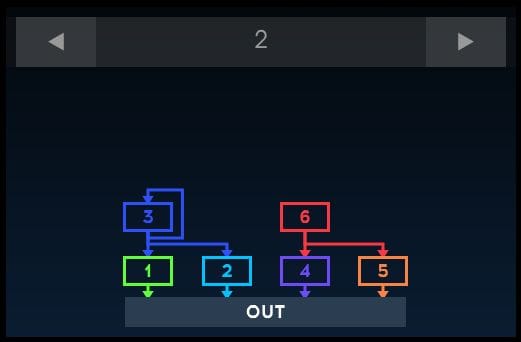
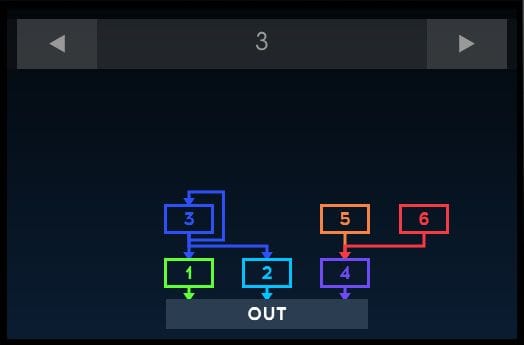



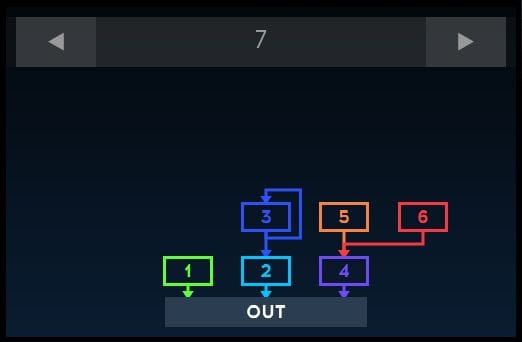

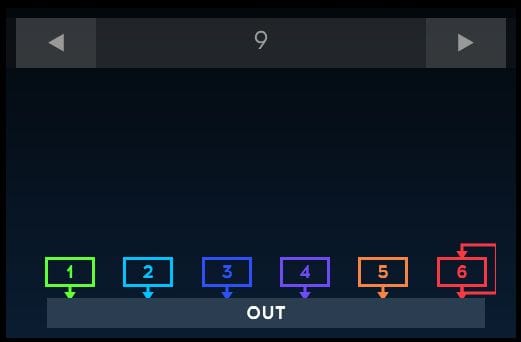
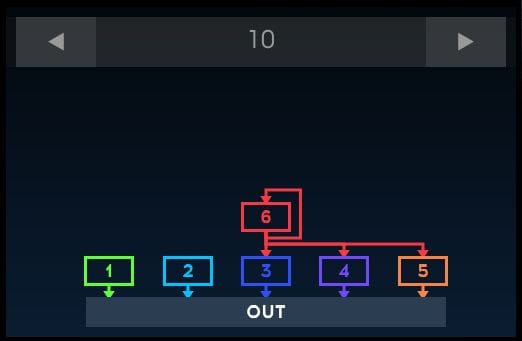
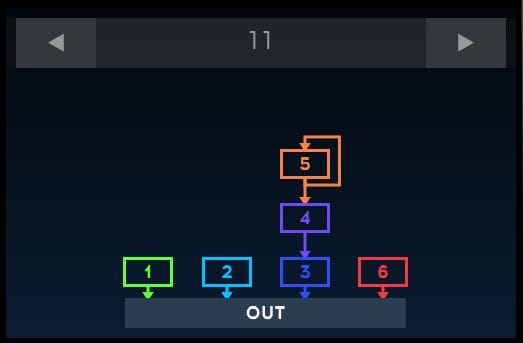
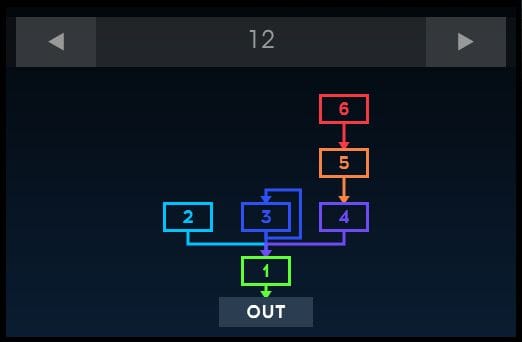

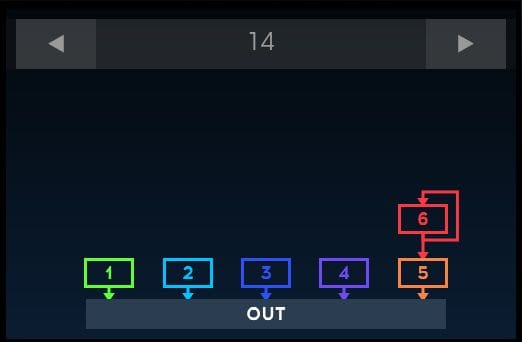
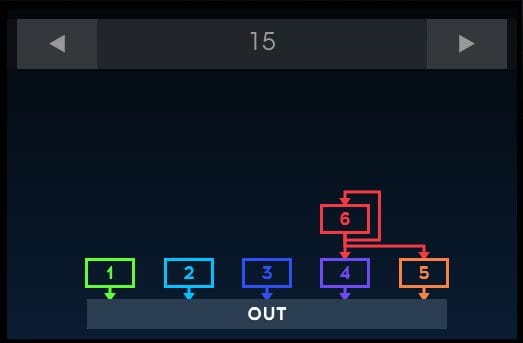

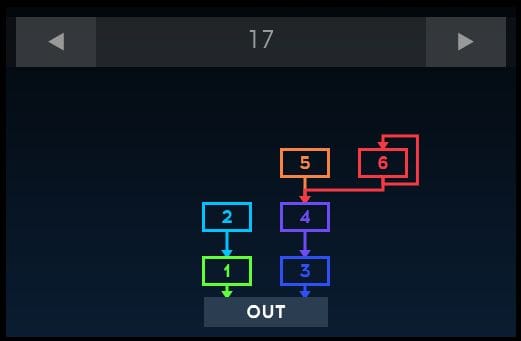
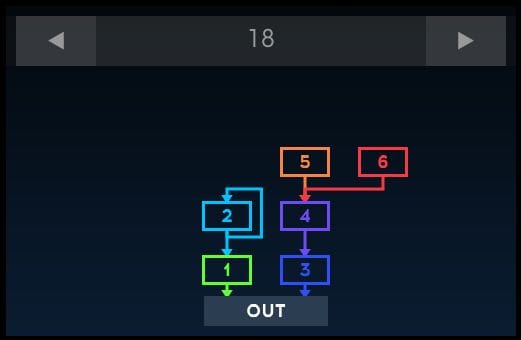

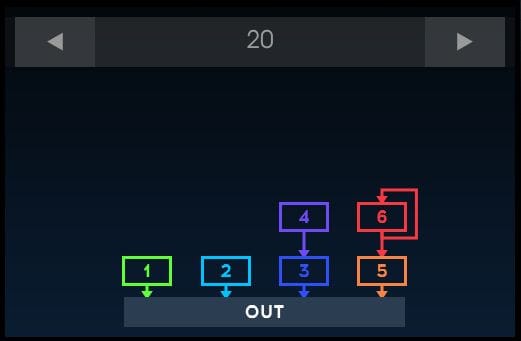
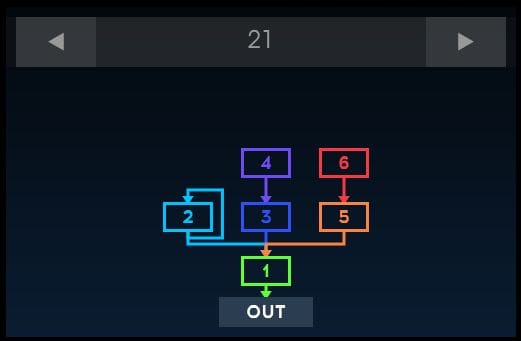

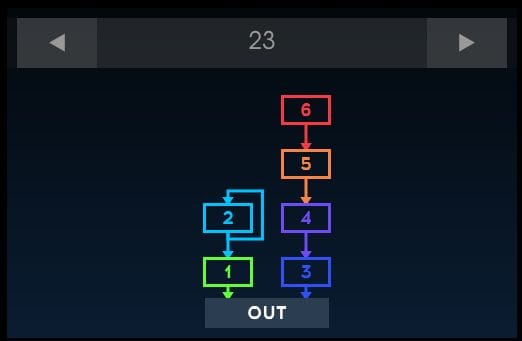
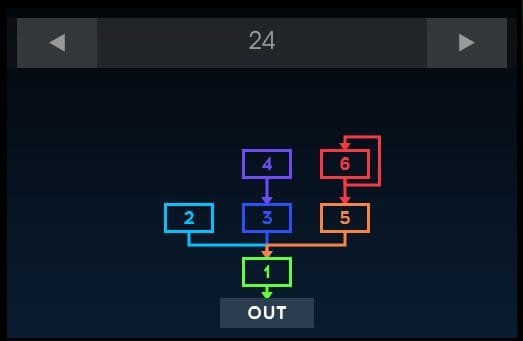
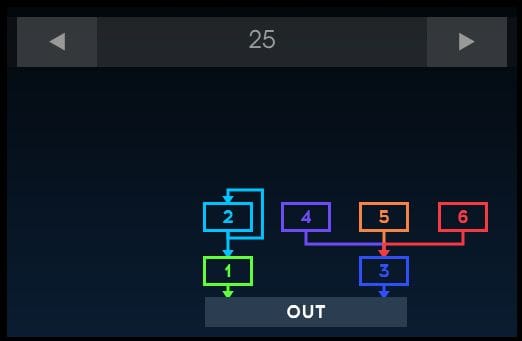
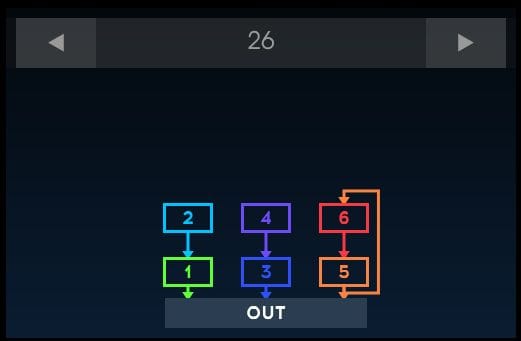

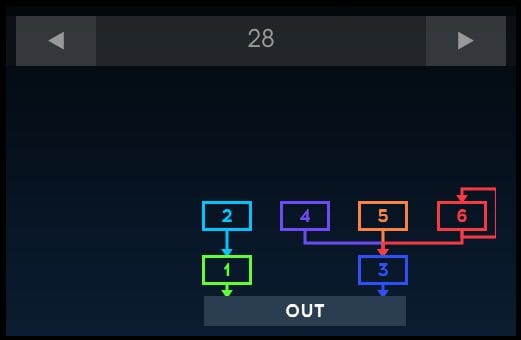
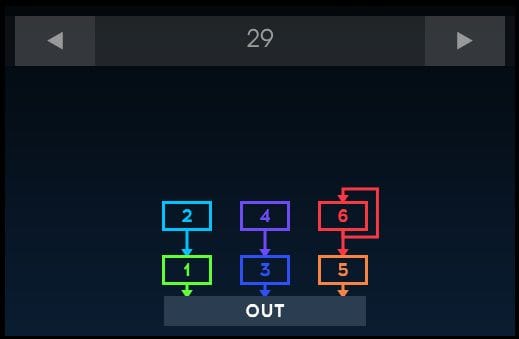
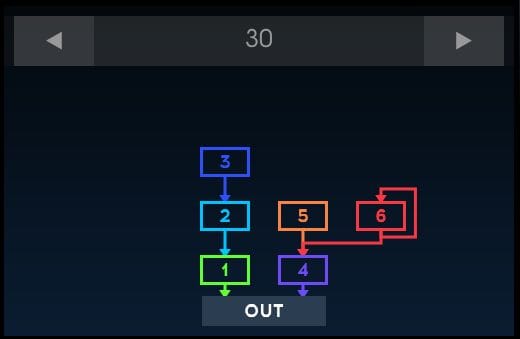
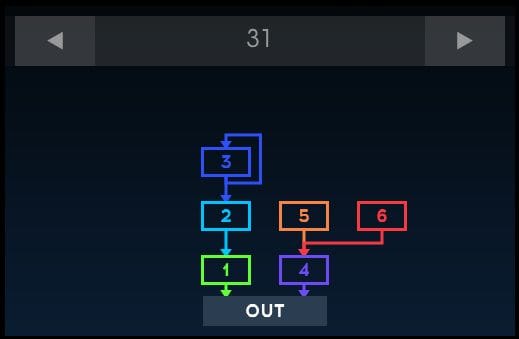
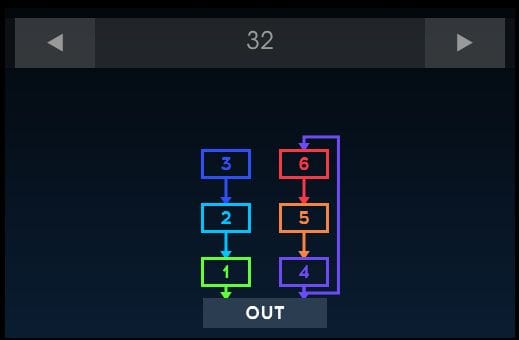
Algorithms
A selection of 32 algorithms determines the architectural relationship of the DX7 V’s six operators as carriers and modulators. These familiar foundations are perfect ready-made starting points for creating and modifying sounds beyond recognition. On top of the carriers’ direct connections to the output and the modulators’ various results, some algorithms also provide a feedback loop, conjuring anything from raspy effects to full-blown distortion.
FM Made
Easy
All the sound of the hardware.
All the real-time control it never had.
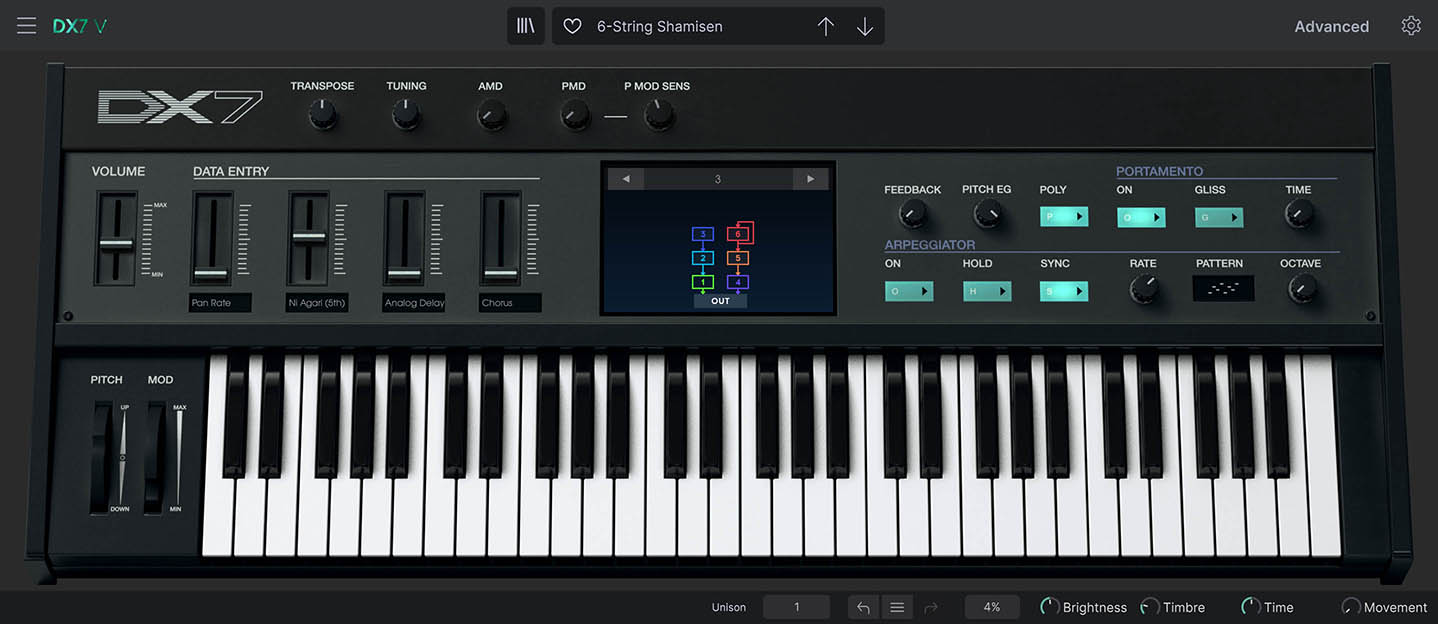
_1
_2
_3
_4
_5
_6
01. Digital ’Rithm
Quickly select or step through the original 32 FM algorithms. Operators are color-coded to simplify editing.
02. Analog Control
Make bold performance gestures in a single move with the Data Entry sliders, which control multiple assignable parameters at once.
03. Global Group
Synth-wide settings like tune, transpose, and depth of pitch and depth of pitch and amplitude modulation are always available.
04. Quick Edits
Set the amount of the tone-defining FM feedback loop, as well as the pitch envelope depth, here.
05. Just Glide
Players loved the DX’s polyphonic portamento, but you had to dive into a menu to use it. In DX7 V, just turn it on and tweak the time.
06. Ups and Downs
Add riffs and motion with the multi-pattern, tempo-syncable arpeggiator — a feature not found on the original.
DX on
Steroids
More waveforms. More envelopes. More modulation. Filters and FX. In hardware, these features would have made for a five-figure synthesizer.
Having just one slider and a bunch of buttons made programming the original somewhat tedious. Electronic music pioneer Brian Eno even built a custom knob controller to get at every parameter of his DX7 at once. With DX7 V, there’s not only more of everything, but our interface also makes it easy and fun to control.
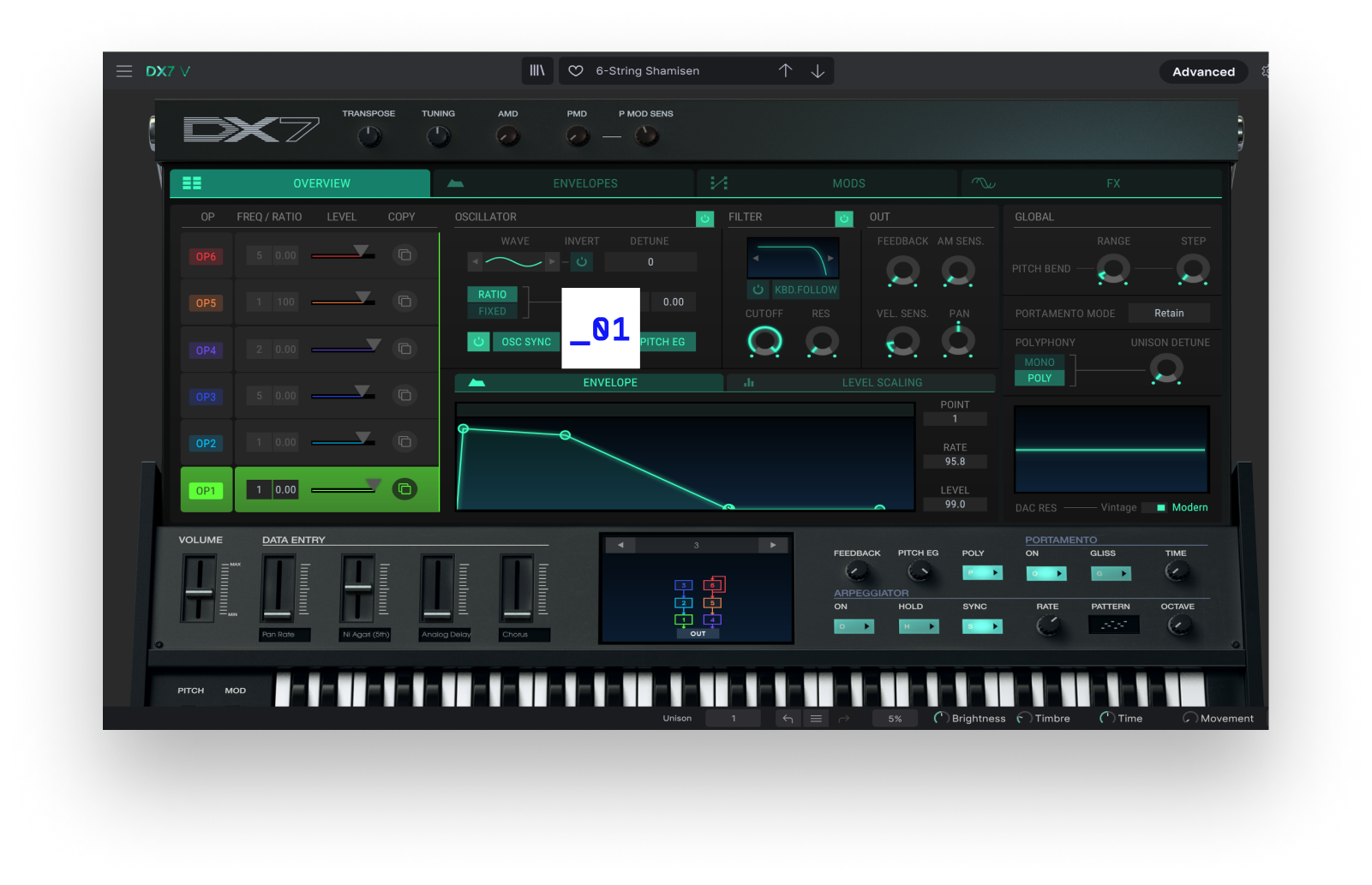
Écoutez-le
à l’œuvre
Like with so many classic synths, we now say the DX “has a sound.”
Electronica
Funkit
Hi-breed
Winter in Summer
Ambient
DX Demo
Presets
Part of what made the DX so recognizable is that even the pros tended to stick to factory presets rather than learning to program it.
DX7 V presents no such obstacles, so our world-class sound designers went to town creating 540 Presets covering every instrument type and musical style imaginable. After listening to these, download the free demo and play them all!
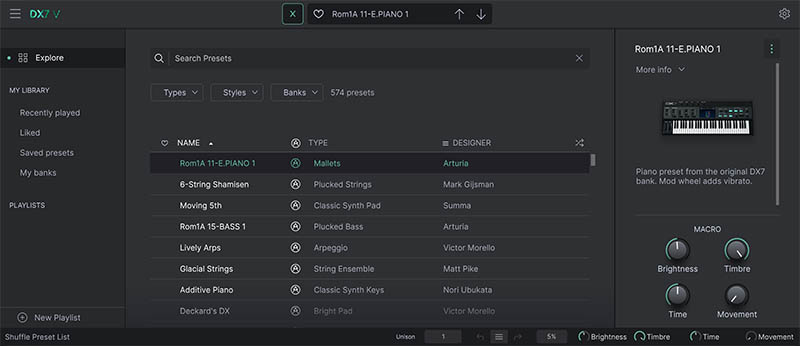
Artist
Corner
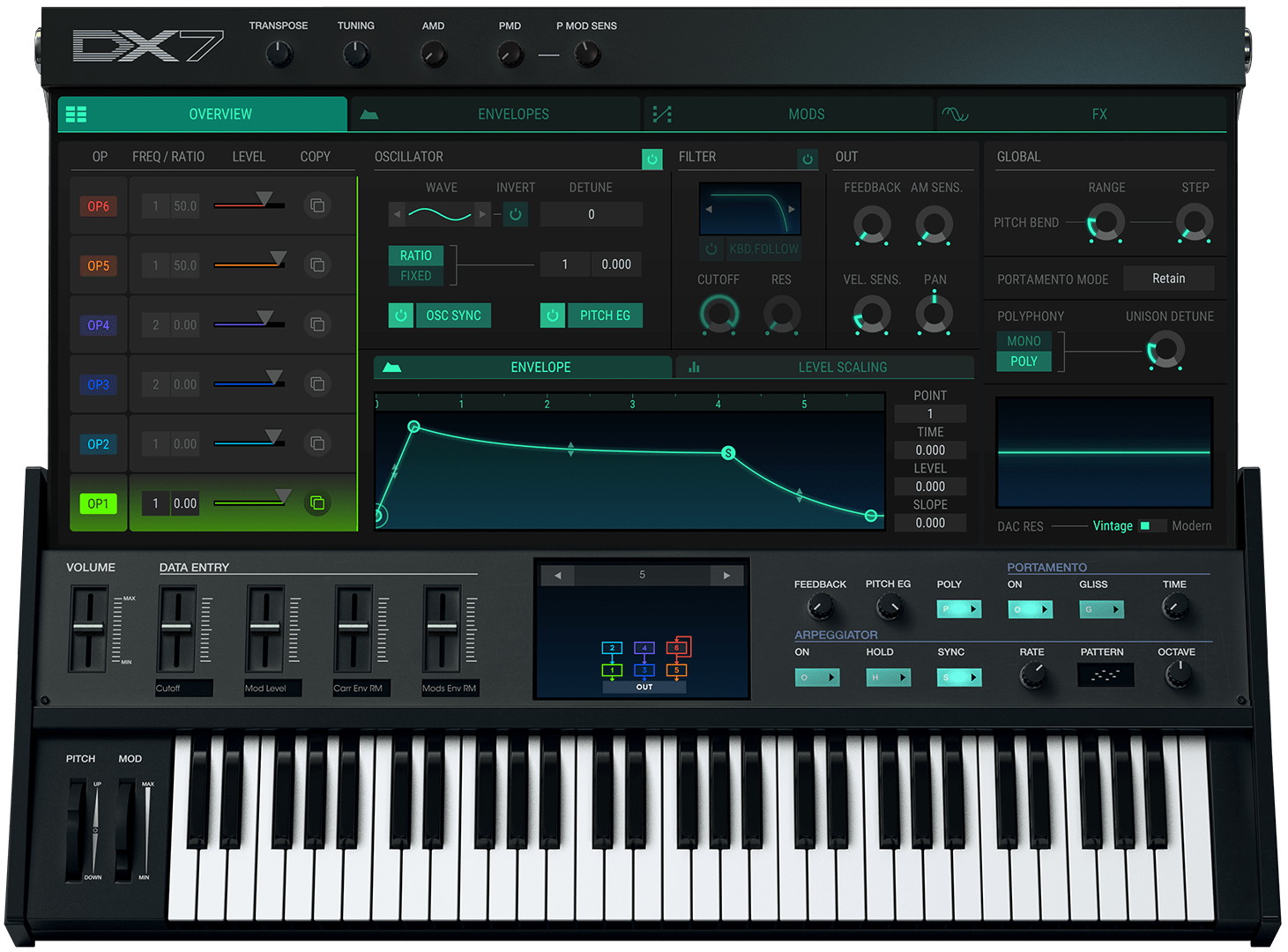
Inclus dans
la V Collection 11 Pro
Cet instrument fait partie de la V Collection Pro, une suite haut de gamme d'instruments logiciels conçue pour une exploration sonore inégalée.
Des claviers fidèlement modélisés aux moteurs de synthèse hybrides, en passant par des sons acoustiques magnifiquement capturés, chaque instrument est optimisé pour l’environnement de production d’aujourd’hui - la V Collection propose les meilleurs claviers à ce jour.
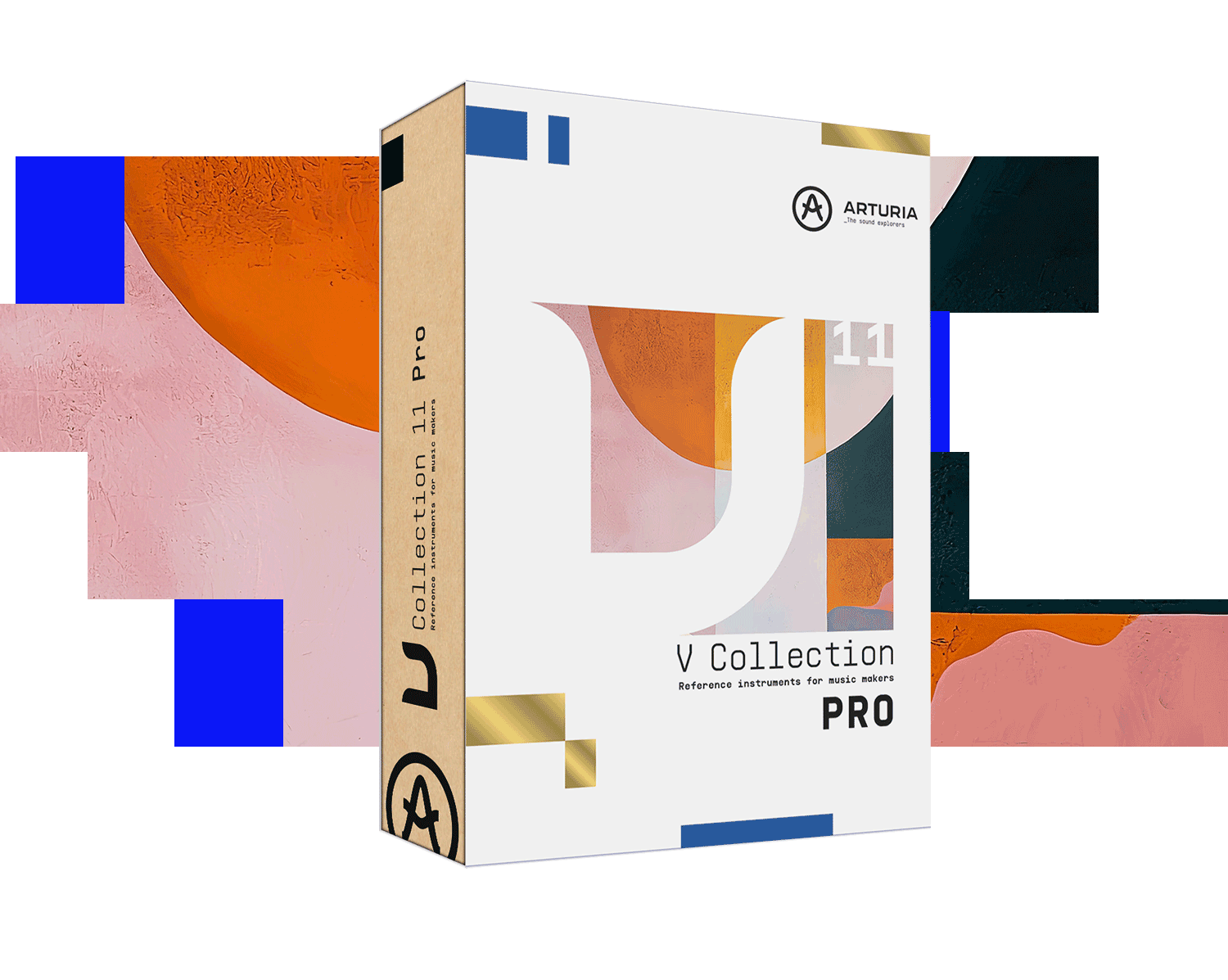
Les fonctionnalités
dont vous avez besoin

Gallery
Main Features
32 original DX7 algorithm
All DX7 original parameters
Original DX7 SysEx import
25 available waveforms per operators
6 Operators with multi-mode filter and feedback per operators
DX7, DADSR and Multi-Segments envelopes (syncable and loopable) per operators
2 Modulation envelopes
4 assignable macros
Advanced modulation matrix
A step sequencer, 2 LFOs with 6 waveforms and an arpeggiator
4 FXs slots that can be routed in parallel or in serie
An oscilloscope
Vintage and Modern DAC Mode for a proper emulation of the DX7 converter
32 voices of polyphony
4 voices of unison with unison detune
432 factory presets

